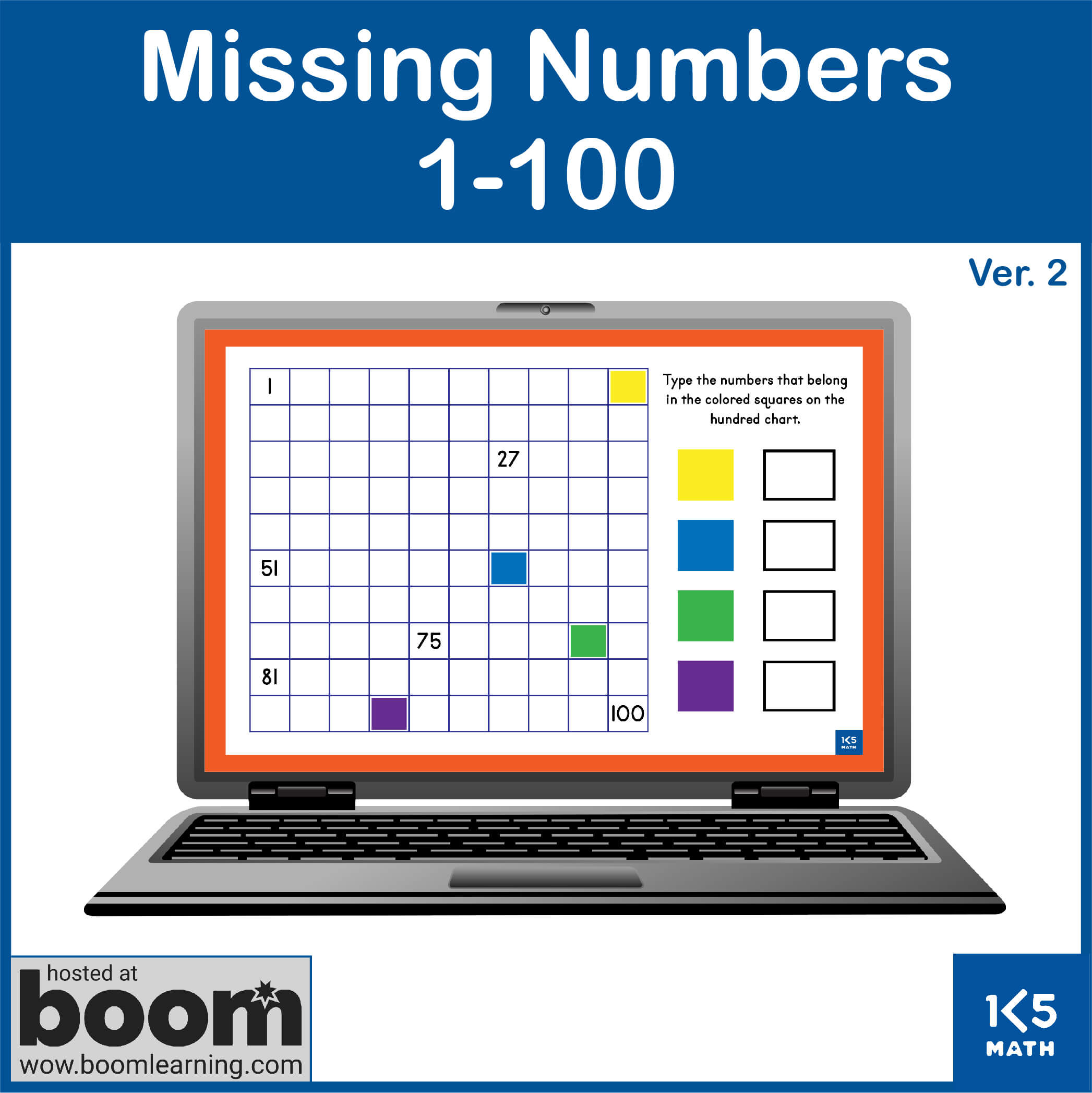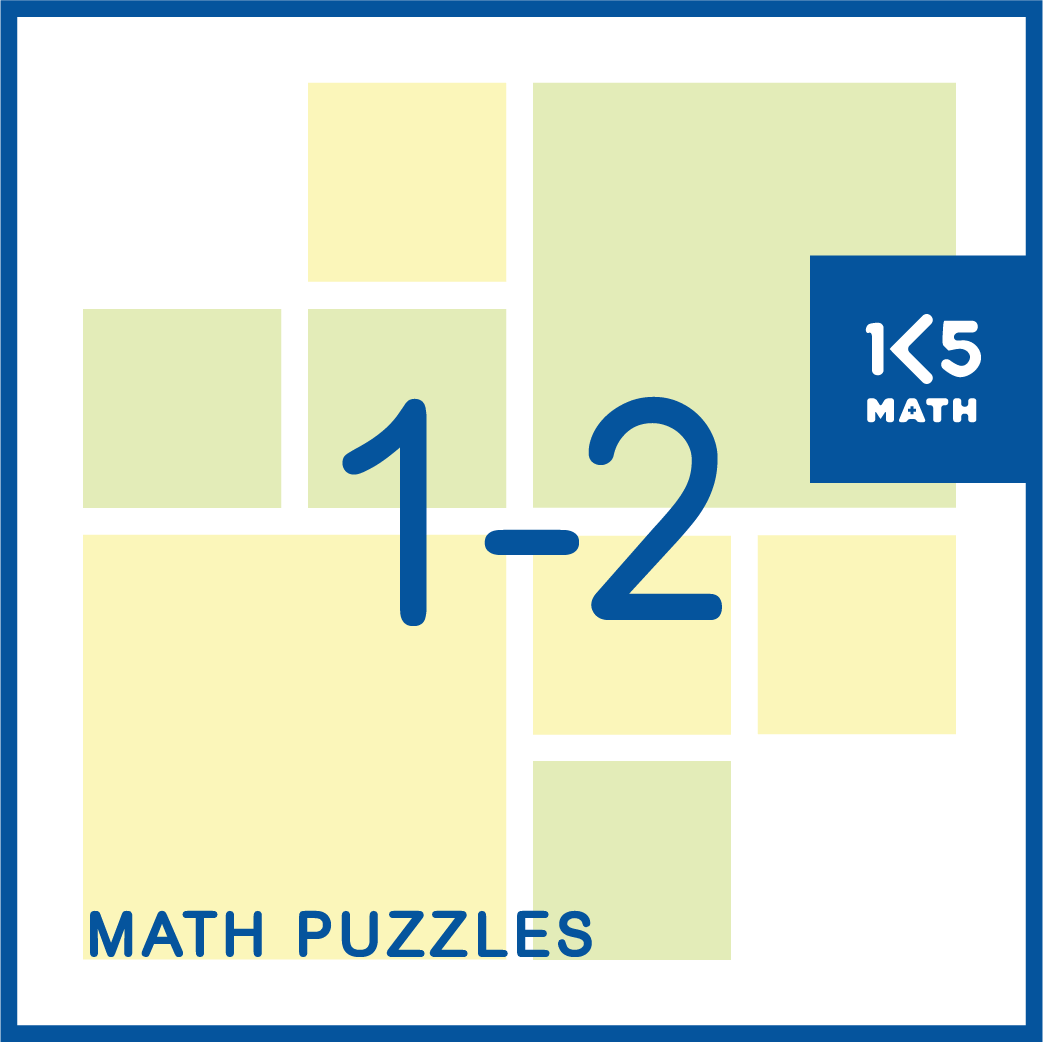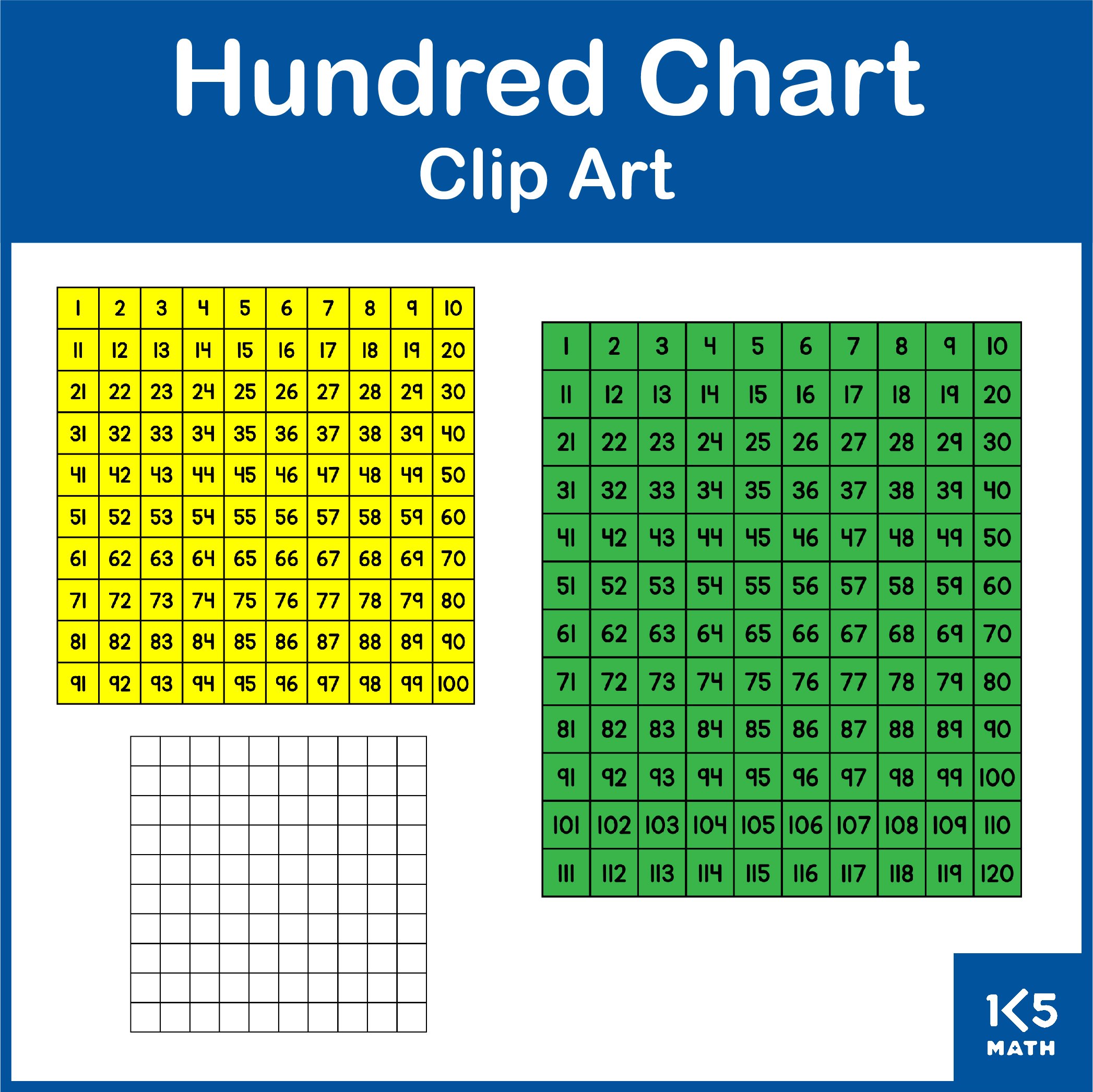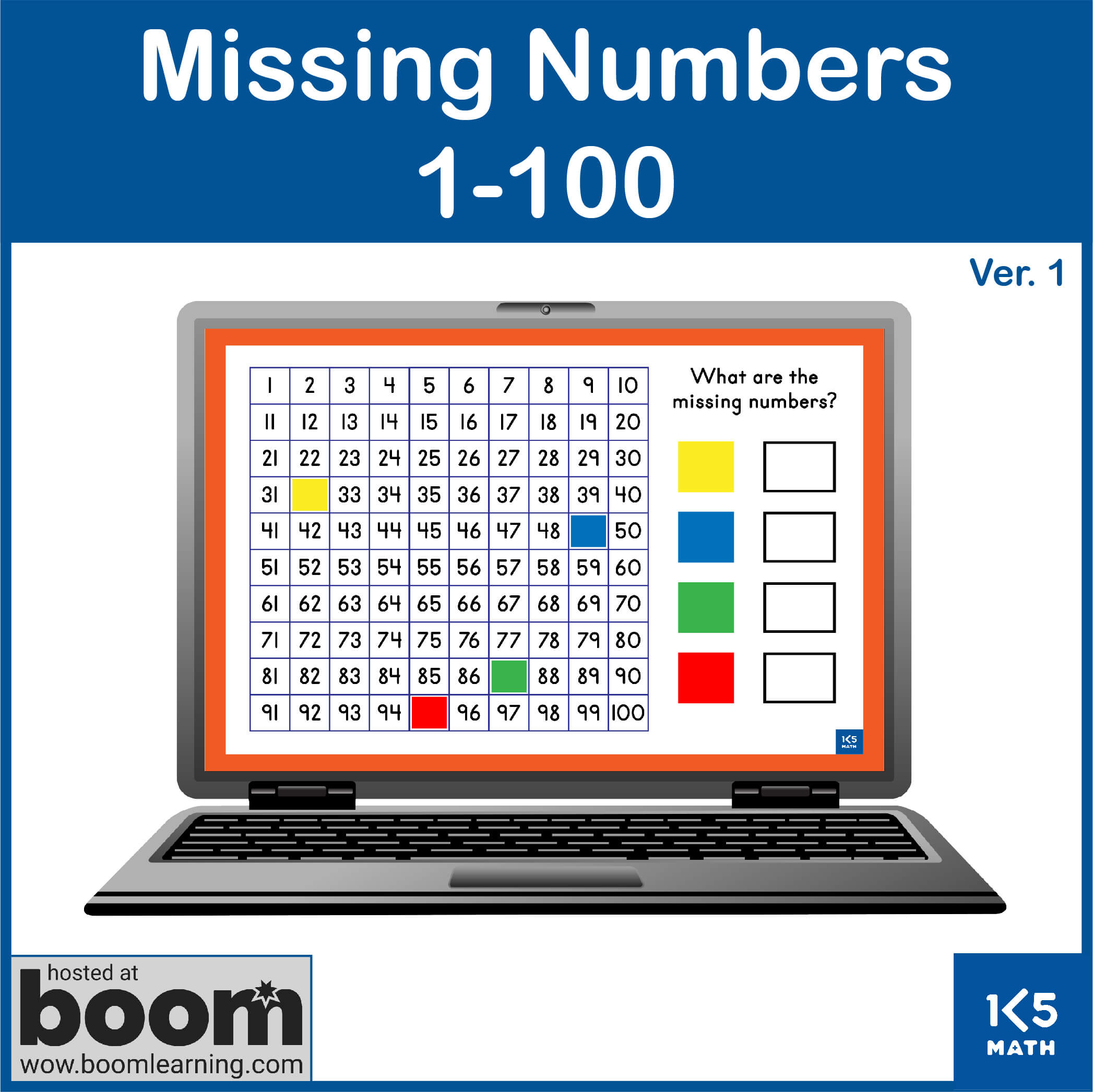Hundred Chart
A hundred chart can help students develop a strong mental model of the mathematical structure of our base ten number system. This tool is useful for exploring a range of concepts, including counting, recognizing number patterns, and adding two-digit numbers. In upper elementary grades, a hundredths chart can be used to build understanding of decimal relationships. When used purposefully, these tools aid in building the concepts and strategies necessary for a solid understanding of numbers and place value. On this page, you will find descriptions of some of our favorite activities that offer students opportunities to use hundred and hundredths charts for thinking and talking about numbers and their relationship to one another. Additionally, you can download sample activities to try with your students.
💡Fill the Hundred Chart: Display a Hundred Pocket Chart with only 5-6 pockets filled with the correct numerals. Leave all other pockets blank. Select three numeral cards and three students. Ask each student to place his/her numeral card in the correct pocket and explain the strategy they used to complete this task. Repeat with three numbers and three students per day until all pockets are filled. Take note of students who use a count by one strategy and those who demonstrate an awareness of the base ten patterns underlying the chart. Select numbers based on your knowledge of individual student’s place value understanding (e.g. you may select a number immediately before or after a number that is already on the chart for one child and a number that is 10, 11, 20, 22, or 30 more than a number on the chart for another child who demonstrates an understanding of the base ten pattern).
Possible questions to involve other students:
- Yesterday we had __ numbers on our hundred chart and today we added 3 more. How many numbers do we now have on our hundred chart? How do you know?
- If there are __ numbers on our hundred chart how many more numbers do we need to add to fill it? Ask several students to explain the strategy used to solve this problem.
- We now have ____ numbers on our hundred chart. If we continue to add 3 numbers every day how many more days/weeks will it take to fill our hundred chart?
💡Hundred Chart Puzzles can provide opportunities to help students build a mental model of the hundred chart and develop familiarity with the plus one, minus one, plus ten and minus ten patterns on it. Below are a few ideas for different types of hundred chart puzzles:
➡️ Cut up laminated hundred charts in various configurations and store each puzzle in a zip-lock bag. Students work in partnerships to recreate the chart. Provide a copy of a hundred chart for students requiring support.
➡️ In the pencil and paper version of the Hundred Chart Puzzle one section of the hundred chart is shown. Students must read the one number shown and write a number in each blank square using what they know about the patterns on a hundred chart. After all the blank squares are filled, the student selects one number and explains their reasoning as to why this number belongs in the square. See pages 4 - 23 of Math Puzzles (Grades 1-2) for more two and three-digit Hundred Chart Puzzles.
➡️ Write selected numerals from one section of the hundred chart on color tiles for students to organize using their place value knowledge. Once students are secure with numbers to 100, extend to puzzles with larger 3-digit numbers as seen in the video below.
💡Four in a Line on a Hundred Chart is a partner game in which players take turns to write a number on a blank hundred chart using a different colored pencil each. A player with four numbers in a line (horizontally, vertically or diagonally) may circle them to score one point. Play continues until all the squares on the hundred chart are filled. This game involves lots of place value thinking as students must use the structure of the chart to determine what number belongs in each square and explain their thinking. Strategic thinking also comes into play as players can block each other and must think carefully about the best place on the hundreds chart to place their next number.
Download a copy of version one (several numbers filled in on the hundred chart as a scaffold), version two (1 and 100 only marked on the hundred chart) and version three (401 and 500 only marked on the hundred chart).

💡What's My Secret Number? integrates coding and math. A hundred chart is marked with a starting point (a dot). Students must use the information in the secret code to mark a pathway on the grid in order to determine the secret number. Initially students work on grids with the codes provided. Later they create their own codes for a partner to solve. Click on the underlined blue text to download versions 1-3.
💡What's My Secret Decimal? is designed for 4th and 5th graders. This version of the game uses a hundredths chart in place of a hundred chart in order to build understanding of decimals and their relationship to one another. Click on the underlined blue text to download versions 1-3.

💡Hundred Dot Puzzles provide another engaging way to develop place value understanding. After using mental math to solve a set of problems, students must find the corresponding numbers on a hundred dot grid, where only the dots 1-10, 50, and 100 are labeled. To reveal the mystery picture, students must carefully plot each sum or difference by applying their understanding of base ten patterns. Once students are familiar with hundred dot puzzles, you can extend the activity using grids with 200 dots.
Download three Hundred Dot Puzzle samples here. For more Hundred Dot Puzzles (and Two Hundred Dot Puzzles), see pages 34 - 50 in Math Puzzles (Grades 1-2).



